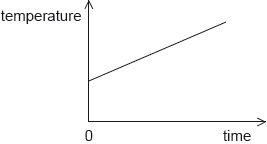| Date | May 2017 | Marks available | 2 | Reference code | 17M.2.HL.TZ1.6 |
| Level | Higher level | Paper | Paper 2 | Time zone | 1 |
| Command term | Calculate | Question number | 6 | Adapted from | N/A |
Question
The diagram shows the gravitational field lines of planet X.
Outline how this diagram shows that the gravitational field strength of planet X decreases with distance from the surface.
The diagram shows part of the surface of planet X. The gravitational potential at the surface of planet X is –3V and the gravitational potential at point Y is –V.
Sketch on the grid the equipotential surface corresponding to a gravitational potential of –2V.
A meteorite, very far from planet X begins to fall to the surface with a negligibly small initial speed. The mass of planet X is 3.1 × 1021 kg and its radius is 1.2 × 106 m. The planet has no atmosphere. Calculate the speed at which the meteorite will hit the surface.
At the instant of impact the meteorite which is made of ice has a temperature of 0 °C. Assume that all the kinetic energy at impact gets transferred into internal energy in the meteorite. Calculate the percentage of the meteorite’s mass that melts. The specific latent heat of fusion of ice is 3.3 × 105 J kg–1.
Markscheme
the field lines/arrows are further apart at greater distances from the surface
circle centred on Planet X
three units from Planet X centre
loss in gravitational potential =
«= 1.72 × 105 JKg−1»
equate to v2
v = 590 «m s−1»
Allow ECF from MP1.
available energy to melt one kg 1.72 × 105 «J»
fraction that melts is = 0.52 OR 52%
Allow ECF from MP1.
Allow 53% from use of 590 ms-1.


